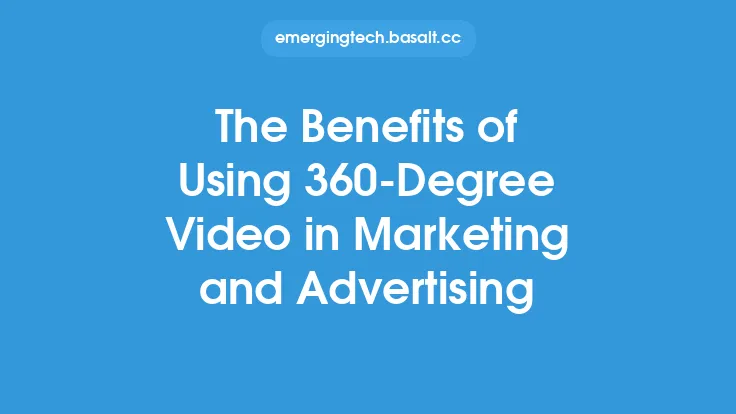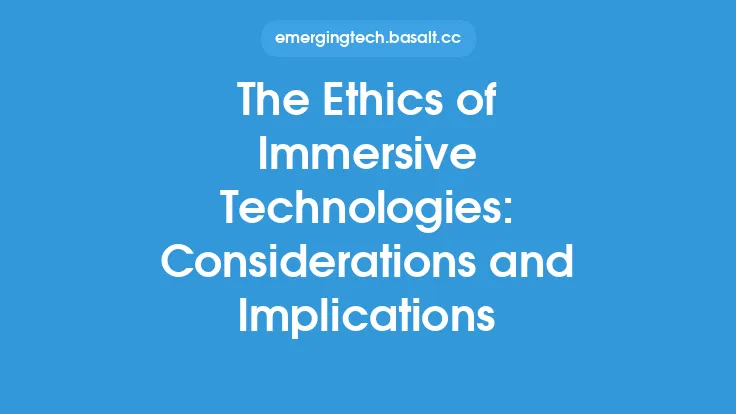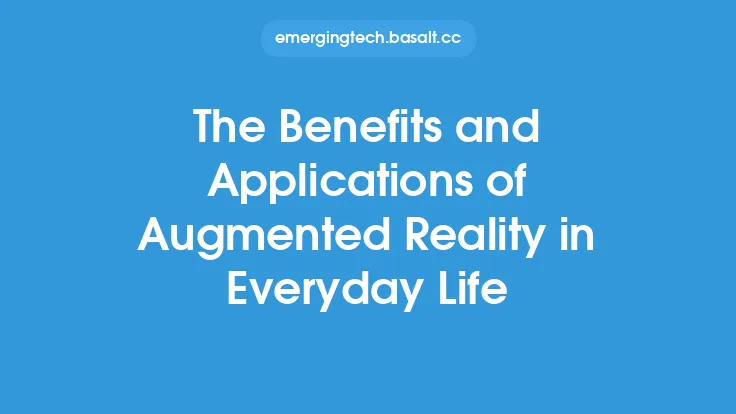The world of marketing and advertising has undergone a significant transformation in recent years, with the advent of immersive technologies such as Virtual Reality (VR), Augmented Reality (AR), and Mixed Reality (MR). These technologies have enabled businesses to create engaging, interactive, and memorable experiences for their customers, setting them apart from traditional marketing methods. In this article, we will delve into the role of immersive technologies in marketing and advertising, exploring their applications, benefits, and future prospects.
Introduction to Immersive Technologies
Immersive technologies refer to a range of digital technologies that simulate immersive and interactive environments, allowing users to engage with virtual objects, spaces, and experiences. VR, AR, and MR are the primary forms of immersive technologies used in marketing and advertising. VR creates a completely virtual environment, shutting out the physical world, while AR overlays digital information onto the real world. MR, on the other hand, combines elements of both VR and AR, allowing users to interact with virtual objects in the real world.
Applications of Immersive Technologies in Marketing and Advertising
Immersive technologies have a wide range of applications in marketing and advertising, including product demonstrations, brand experiences, event marketing, and social media campaigns. For instance, companies like IKEA and Lowe's have used AR to allow customers to visualize furniture and home decor products in their own spaces before making a purchase. Similarly, brands like Coca-Cola and McDonald's have used VR to create immersive brand experiences, such as virtual reality games and interactive stories.
Benefits of Immersive Technologies in Marketing and Advertising
The use of immersive technologies in marketing and advertising offers several benefits, including increased engagement, improved brand recall, and enhanced customer experience. Immersive technologies allow customers to interact with products and brands in a more immersive and memorable way, leading to increased brand loyalty and advocacy. Additionally, immersive technologies provide businesses with valuable data and insights on customer behavior and preferences, enabling them to refine their marketing strategies and improve customer targeting.
Technical Requirements for Immersive Technologies
The implementation of immersive technologies in marketing and advertising requires a range of technical expertise, including 3D modeling, animation, and programming. Businesses need to invest in specialized hardware and software, such as VR headsets, AR glasses, and MR platforms, to create and deploy immersive experiences. Additionally, companies need to ensure that their immersive experiences are optimized for different devices and platforms, including desktops, mobile devices, and social media platforms.
Measuring the Effectiveness of Immersive Technologies
Measuring the effectiveness of immersive technologies in marketing and advertising is crucial to understanding their impact and refining marketing strategies. Businesses can use a range of metrics, including engagement rates, click-through rates, and conversion rates, to evaluate the success of their immersive campaigns. Additionally, companies can use data analytics tools to track customer behavior and preferences, providing valuable insights into the effectiveness of their immersive experiences.
Future Prospects of Immersive Technologies in Marketing and Advertising
The future of immersive technologies in marketing and advertising looks promising, with advancements in technologies like 5G networks, artificial intelligence, and the Internet of Things (IoT) expected to further enhance the capabilities of immersive technologies. As immersive technologies become more widespread and accessible, businesses can expect to see increased adoption and innovation in the marketing and advertising space. Additionally, the rise of new platforms and devices, such as AR glasses and VR headsets, is expected to further expand the reach and potential of immersive technologies in marketing and advertising.
Challenges and Limitations of Immersive Technologies
Despite the many benefits and opportunities offered by immersive technologies, there are also several challenges and limitations that businesses need to be aware of. These include the high cost of implementation, the need for specialized technical expertise, and the potential for motion sickness and other health effects associated with VR and MR. Additionally, businesses need to ensure that their immersive experiences are accessible and inclusive, providing equal opportunities for all customers to engage with their brands and products.
Best Practices for Implementing Immersive Technologies
To get the most out of immersive technologies in marketing and advertising, businesses need to follow best practices, including defining clear goals and objectives, understanding their target audience, and ensuring that their immersive experiences are engaging, interactive, and memorable. Additionally, companies need to invest in high-quality content and storytelling, ensuring that their immersive experiences are compelling and effective in communicating their brand message. By following these best practices, businesses can create immersive experiences that resonate with their customers and drive real results for their marketing and advertising efforts.





